Back in town after two weeks of travel and wanderings, I'm back to my plants and my indoor garden, especially as the other garden has become almost impracticable. In any case, it's quite frankly winter from now on and we'll admit it, there's a lot less to do outside at this time of year !
I found this plant - which came from a single leaf cutting - in full bloom, almost like orchid flowers.
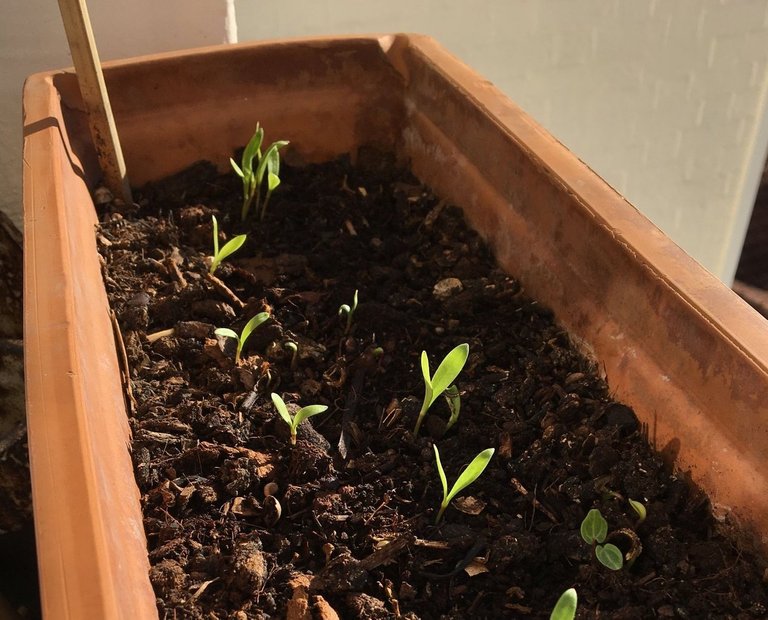
In my previous garden journal I had sown some calendula and nasturtium seeds that I had just had time to see germinate before I left...
And everything grew well ! I don't know if I'll have flowers this season, but as our flat is south-facing, you never know, but it would be amazing !
As always, I was a bit heavy handed with the amount of seeds, haha, and I wonder if I did the right thing by putting the plants in such competition for a limited amount of nutrients... We'll see :)
The neighboring purslane received a little winter pruning as it seemed to me that not much would happen until spring returned.
As for the succulents that I have taken from cuttings, they are growing quite slowly, even if we look after them well ! I imagine that the return of the good weather will give them a good boost too.
Well, I have to admit that I failed with the lemons. In my previous article, I soaked my seeds for 24 hours and then put them in the fridge in a slightly dampened piece of paper towel. Normally this was for two to three weeks and when I opened the airtight bag I should have discovered little shoots ready to be transplanted.
You don't have to be a mind reader to see that this time it didn't work at all! I planted the seeds anyway, we'll see if a miracle happens...
So much for these (very) modest updates !
In the second part of this article, I wanted to introduce you to some of the edible or healing plants (or both) that I came across during my two weeks on the road.
The first one, very abundant wherever the water runs off the rock, is the Venus navel, Umbilicus rupestris. The whole plant is edible and the older and less tender leaves can be preserved in vinegar like gherkins.
But it is excellent just like that, while walking and it is full of water as you can imagine !
The second plant I saw a lot of was the Great Mallow or
Malva sylvestris. The active principle sought in this plant is its mucilage with an emollient effect which makes the plant anti-inflammatory and therefore soothes irritated skin or mucous membranes.
It is mainly used as an herbal tea, generally with dried flowers...
Above are the fruits of the bird sorb, Sorbus aucuparia. As the name suggests, birds are very fond of these berries, which can be eaten raw or cooked into jellies or jams. The fruit is best eaten cooked or at least after a first jelly to soften it.
Here, it is the mountain savory, Satureja montana, a tonic plant which helps digestion. It is also rich in antioxidants and minerals, which is why I always chew a bit of it as I pass by, taking care to pick sprigs that are a bit high up and protected from possible droppings !
Achillea millefolium or Yarrow is one of the most common plants in the northern hemisphere. It has many names that tell us about its uses, such as "nose bleeder", "cut herb" and "carpenter's herb". Indeed, it has been used since antiquity for its haemostatic, antidiabetic, antifungal and anti-inflammatory properties.
I usually use it dried as a tea, but it can also be a good accompaniment to meat or fish.
Against menstrual pains, according to the authors, there is an indication of 8 to 20g of dried flowering tops per litre of water, to be consumed after 10 minutes of infusion, 2 to 4 cups per day out of meals. As the tea darkens, it is preferable to consume it fresh.
Let's finish with the rosehip, a plant of the Rosaceae family that I have loved since childhood. As soon as the first frosts come, the fruit is softened by the action of the cold and, by pressing lightly on it, you can extract an acid and sweet paste.
The raw fruit contains 20 times more vitamin C than oranges of equal weight and is also used to combat diarrhoea and nausea.
If you are walking around after a very cold night, don't hesitate to try this delicious fruit, provided you can identify it well, but normally there is little confusion !
I hope you have enjoyed this article and that you may have learned some things :)
Thanks for reading and visiting, your comments are welcome !
<3
De retour en ville après deux semaines de voyage et pérégrinations, je retrouve mes plantes et mon jardin intérieur, surtout car l'autre jardin est devenu pratiquement impraticable. De toute façon, c'est un peu franchement l'hiver dorénavant et on va se l'avouer, il y a bien moins à faire en extérieur à cette saison !
J'ai trouvé cette plante - qui provient de la bouture d'une seule feuille - en pleine floraison, presque comme des fleurs d'orchidées.

Dans mon précédent garden journal j'avais semé quelques graines de calendula et de capucines que j'avais juste eu le temps de voir germer avant mon départ...
Et tout a bien poussé ! Je ne sais pas si j'aurai des fleurs à cette saison, mais comme notre appartement est orienté plein sud, on ne sait jamais, mais ce serait quand même incroyable..!
Comme toujours, j'ai eu la main un peu lourde sur la quantité de graines, haha et je me demande si j'ai bien fait de mettre ainsi les plantes en pareille compétition pour une quantité de nutriments somme toute limitée... Nous verrons bien :)
Le pourpier voisin a reçu une petite taille hivernale comme il me semblais que plus grand chose n'allait se passer avant le retour du printemps.
Concernant les plantes grasses que j'ai fait partir de boutures, la croissance est assez lente, même si nous les soignons bien ! J'imagine que le retour des beaux jours leur mettra un bon coup de boost aussi.
Bon, je dois avouer que sur le coup des citrons, j'ai essuyé un échec. Dans mon article précédent, j'avais fait tremper mes pépins 24 heures, puis je les avais mis au frigidaire dans un morceau d'essuie-tout légèrement humidifié. Normalement, c'était pendant deux à trois semaines et à l'ouverture du sac hermétique, j'aurai dû découvrir de petites pousses prêtes à être repiquées.
Pas besoin d'être devin pour constater que cette fois, ça n'a pas du tout fonctionné ! J'ai tout de même planté les pépins, on verra si un miracle se produit...
Voilà pour ces quelques (très) modestes mises à jour !
Dans la seconde partie de cet article, je voulais vous présentez les quelques plantes comestibles ou curatives (ou les deux) que j'ai pu croiser durant mes deux semaines de vadrouille.
La première, très abondante partout où l'eau ruisselle de la roche, c'est le Nombril-de-Vénus, Umbilicus rupestris Toute la plante est comestible et pour les feuilles un peu plus âgées et moins tendres, on peu les conserver dans du vinaigre à la manière des cornichons.
Mais c'est déjà excellent juste comme cela, en marchant et c'est plein d'eau comme vous vous en doutez !
La seconde plante que j'ai beaucoup vue, c'est la Grande Mauve ou
Malva sylvestris. Le principe actif recherché dans cette plante est son mucilage à l'effet émollient qui rend la plante anti-inflammatoire qui apaise donc les peaux ou les muqueuses irritées.
On l'utilise surtout en tisane, généralement avec des fleurs séchées...
Ci-dessus, il s'agit des fruit du sorbier des oiseleurs, Sorbus aucuparia. Comme son nom l'indique, les oiseaux sont très friands de ces baies que l'on peut consommer crues, ou bien cuites en gelées ou confitures. Les fruits sont tout de même meilleurs cuits ou au moins après une première gelée qui les ramollit.
Ici, c'est la sarriette des montagnes, Satureja montana, une plante tonifiante et qui aide notamment à la digestion. Elle est aussi riche en antioxydants et en minéraux, c'est pourquoi j'en mâchonne toujours un peu en passant, en veillant à prendre des brins un peu en hauteur et protégés d'éventuelles déjections !
L'Achillea millefolium ou Achillée millefeuille est une des plantes les plus représentées de l'hémisphère Nord. Elle possède de nombreux noms qui nous renseignent sur ses usages comme “saigne-nez”, “herbe à la coupure”, “herbe aux charpentiers”. En effet, elle est utilisée depuis l'Antiquité pour ses propriétés hémostatique, antidiabétique, antifongique et anti-inflammatoire.
Je l'utilise généralement séchée en tisane, mais elle peut aussi être un bon accompagnement avec de la viande ou du poisson.
Contre les douleurs menstruelles, selon les auteurs on trouve une indication de 8 à 20g de sommités fleuries séchées par litre d’eau, à consommer après 10 minutes d’infusion, 2 à 4 tasses par jour hors des repas. Comme la tisane noircit, il est préférable de la consommer fraîche.
Terminons avec le Cynorhodon, une plante de la famille des Rosacées et que j'adore depuis l'enfance. Dès que viennent les premières gelées, le fruit est ramolli par l'action du froid et on peu, en appuyant légèrement dessus, extraire une pâte acide et sucrée.
À poids égal, le fruit cru est 20 fois plus dosé en vitamine C que les oranges et c'est aussi utilisés pour lutter contre les diarrhées et les nausées.
Si vous vous promenez à la suite d'une nuit très froide, n'hésitez pas à goûter ce fruit délicieux, à condition de bien l'identifier, mais normalement, il y a assez peu de confusions possibles !
J'espère que vous aurez apprécié cet article et que vous aurez aéventuellement appris certaines choses :)
Merci pour votre lecture et visite, vos commentaires sont les bienvenus !
<3
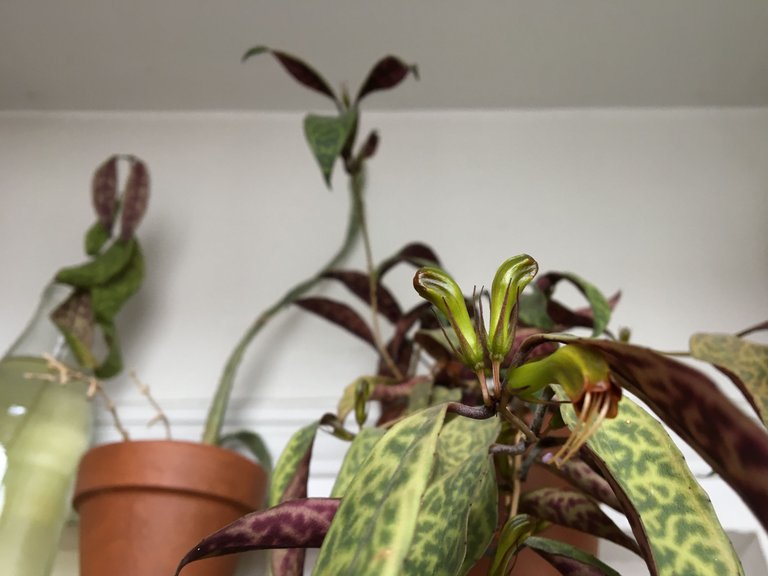
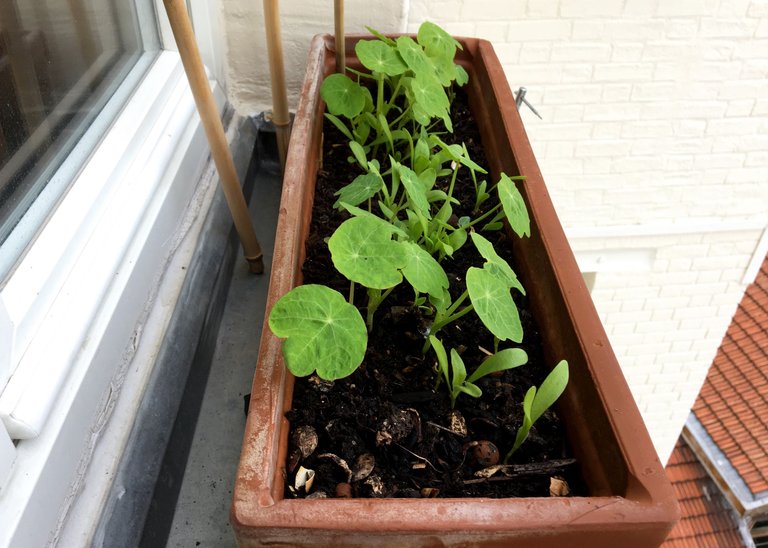
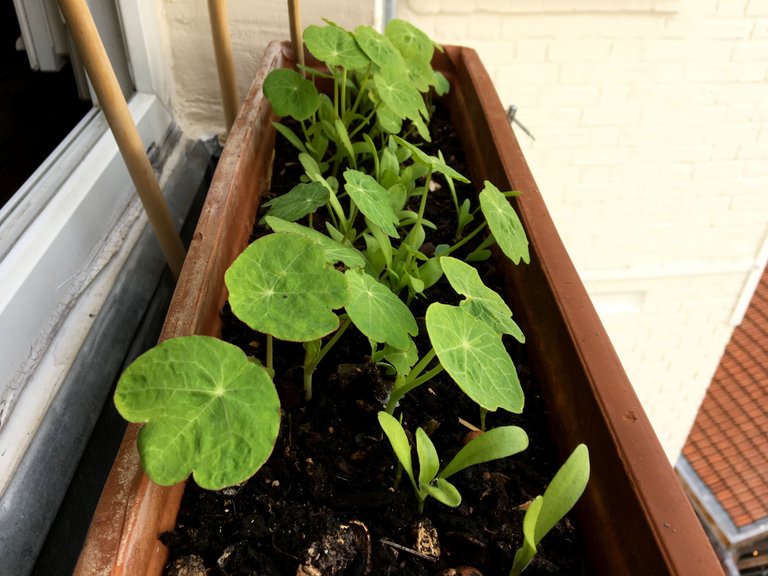
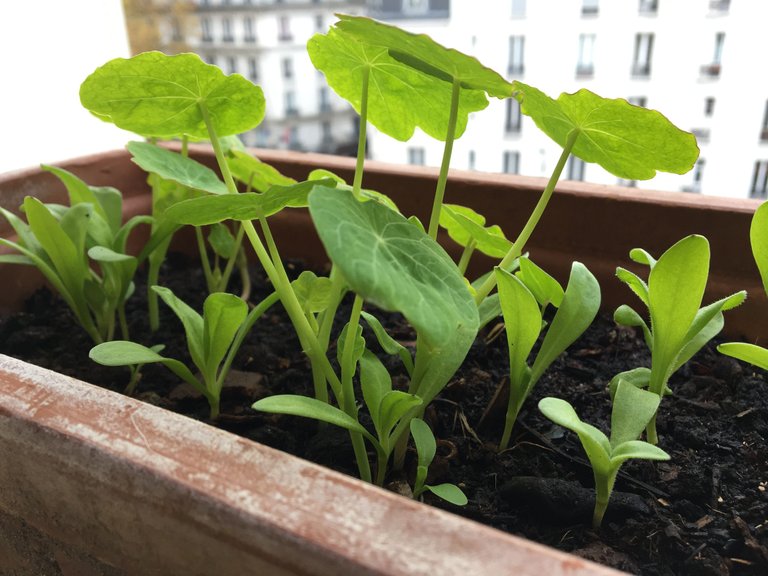
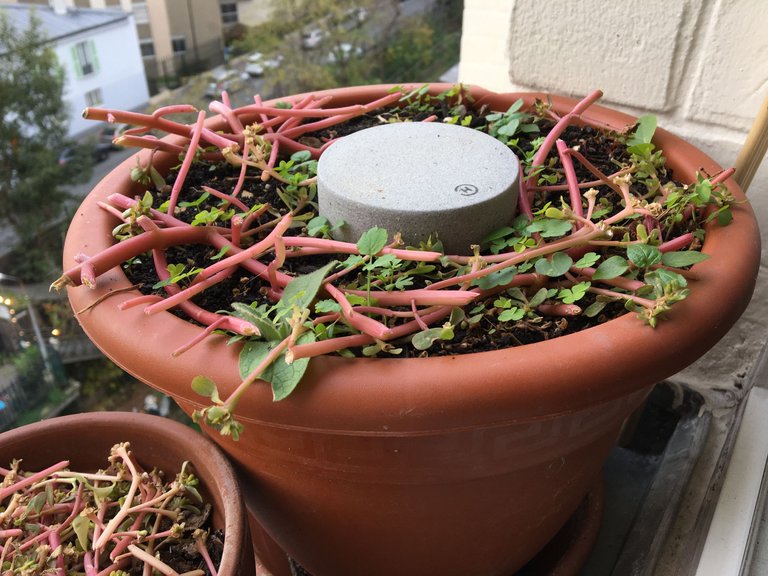
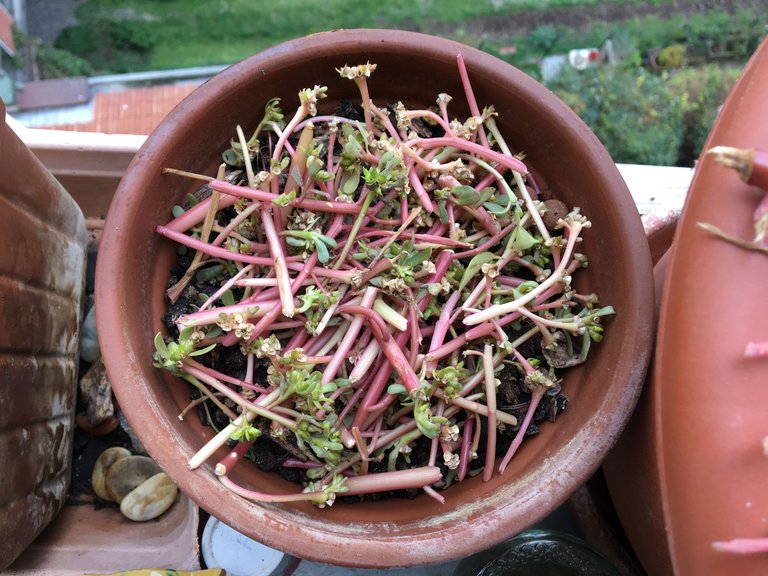
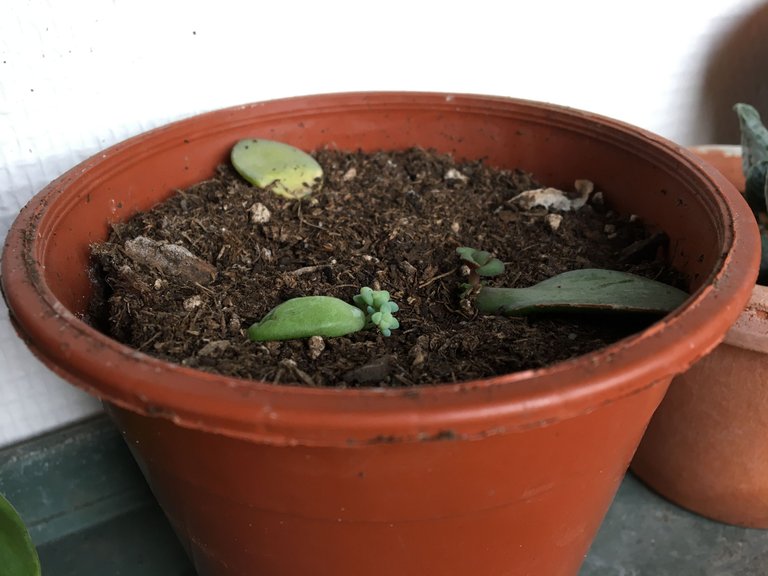
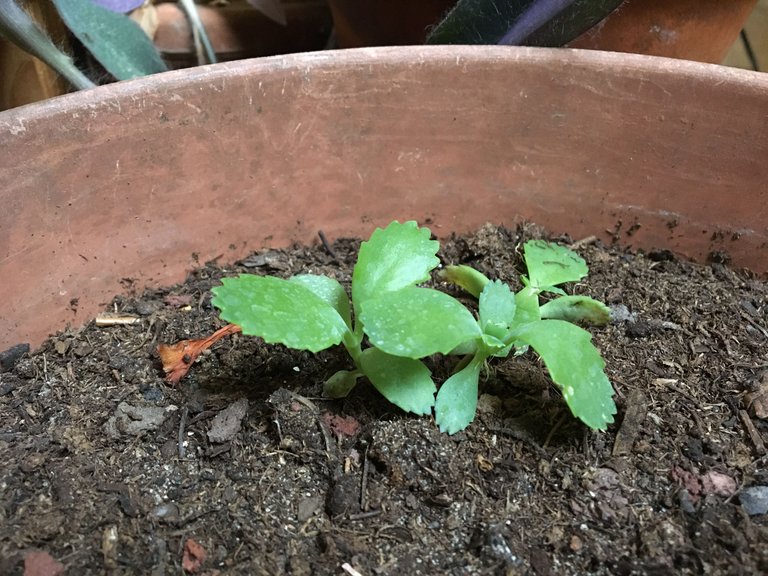
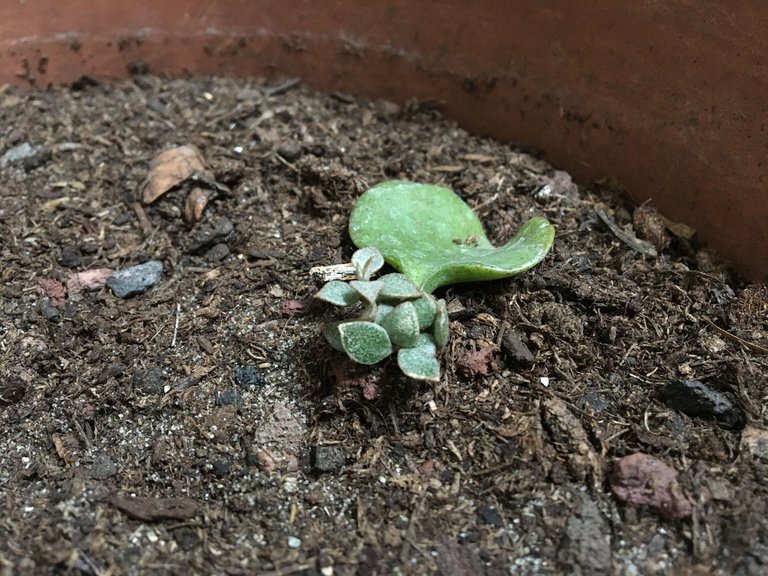
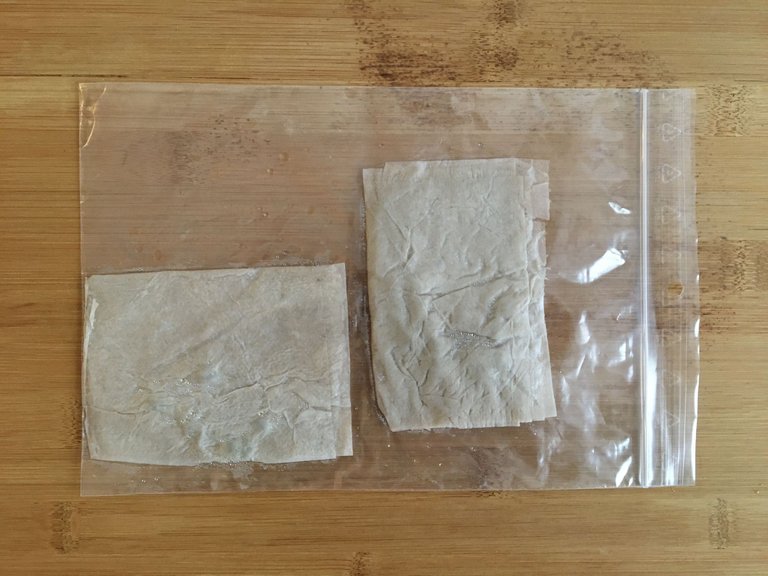
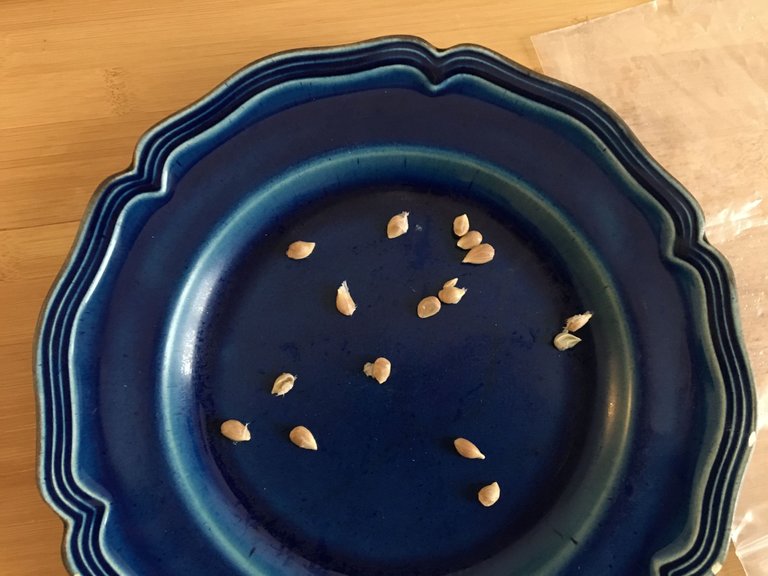
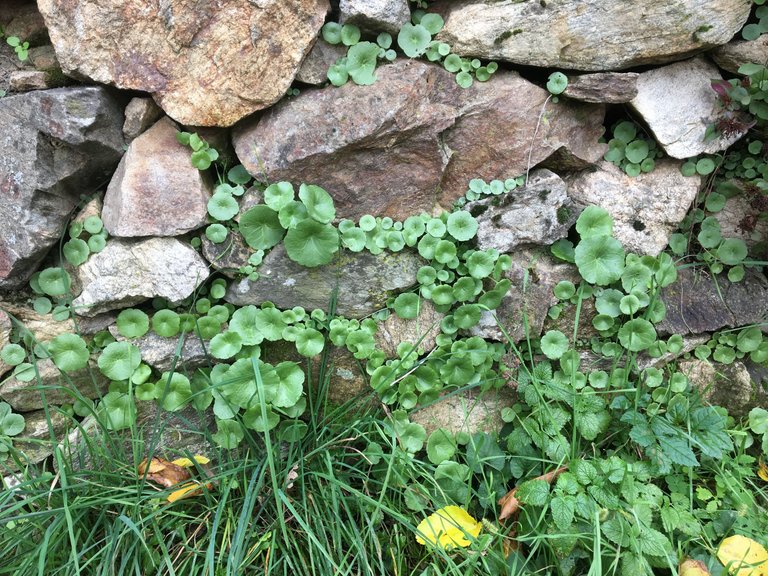
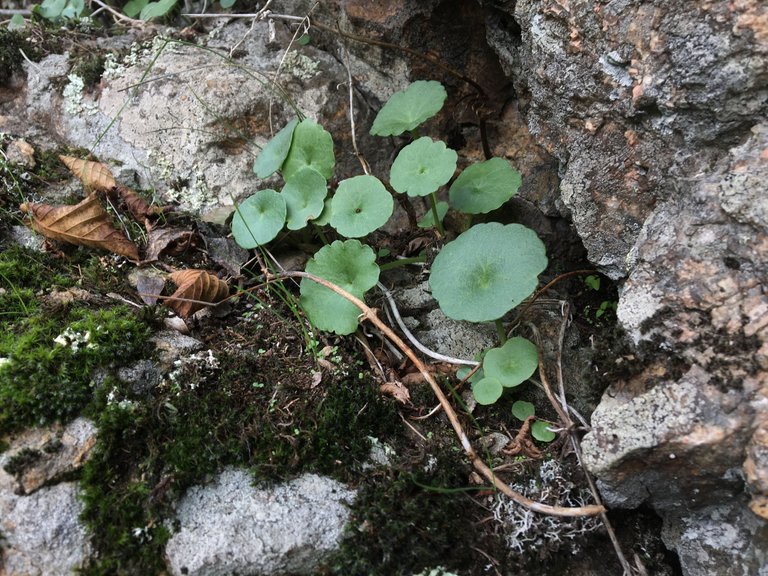
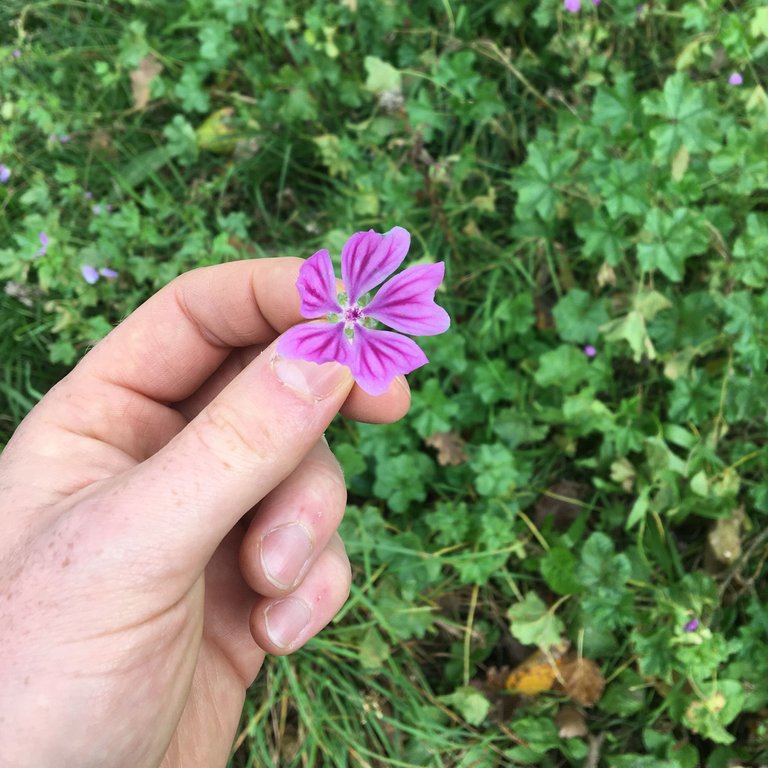
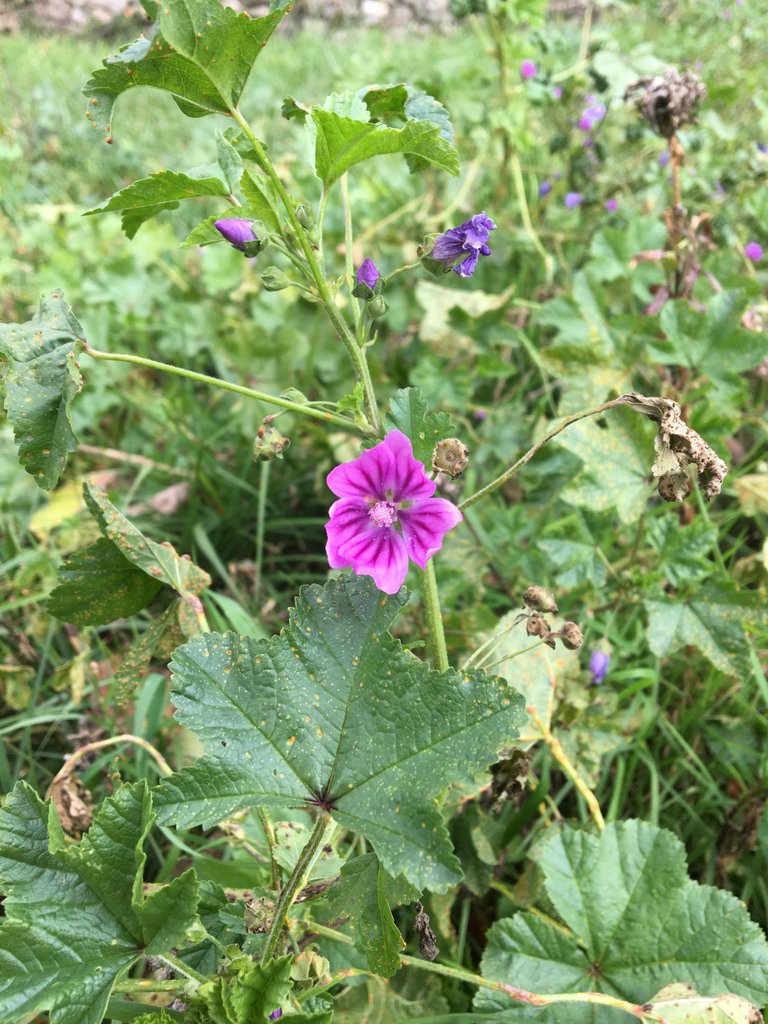
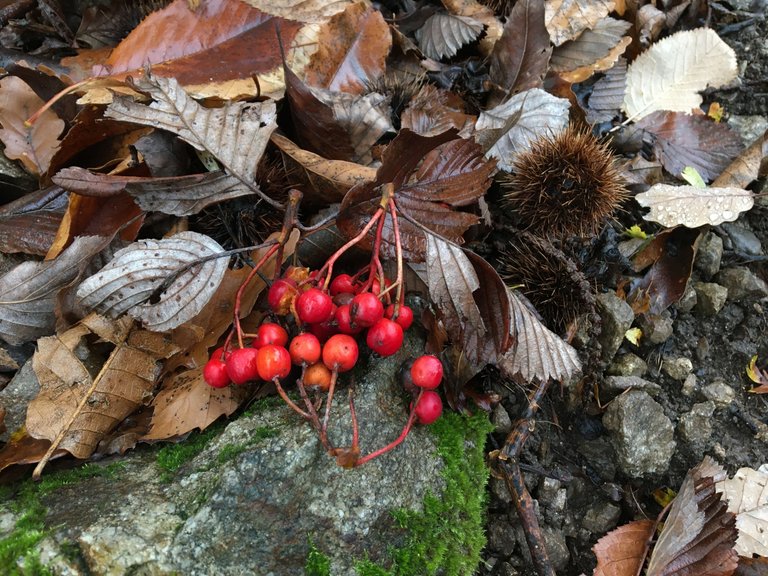
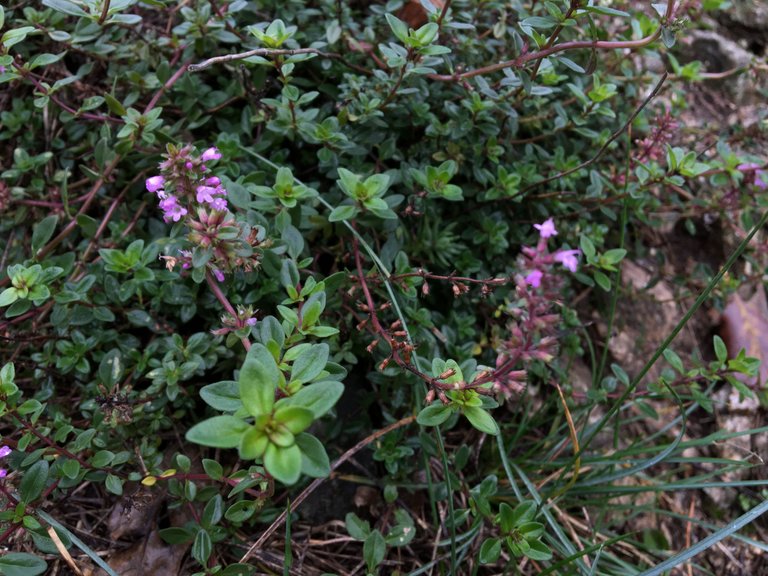
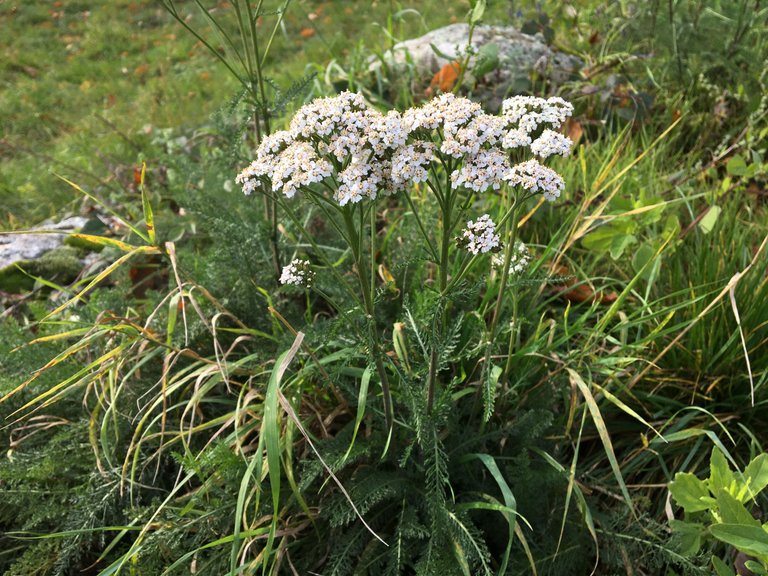
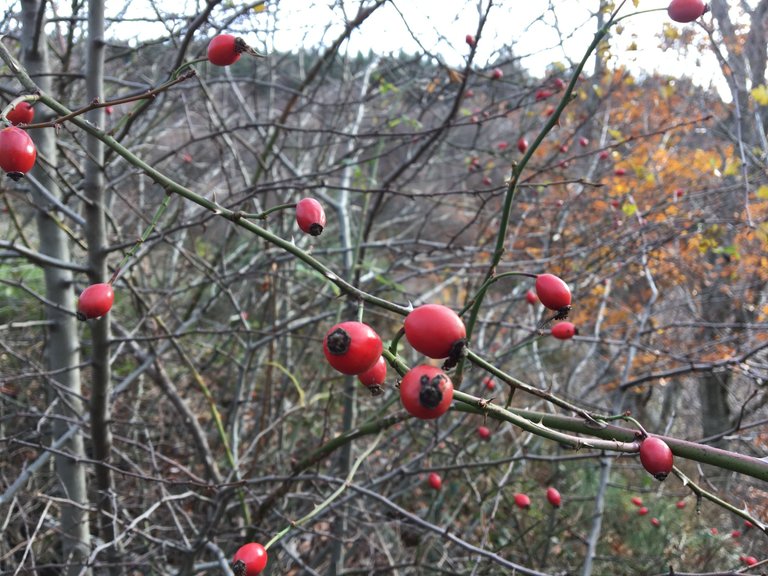
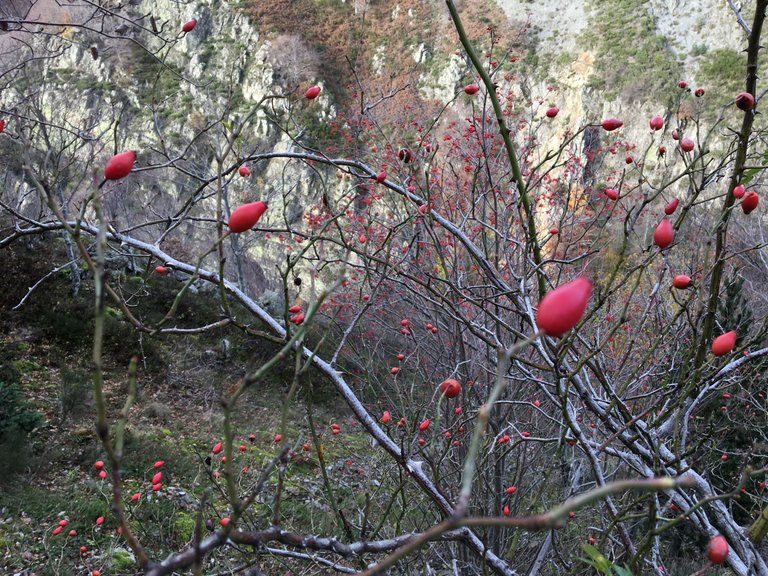
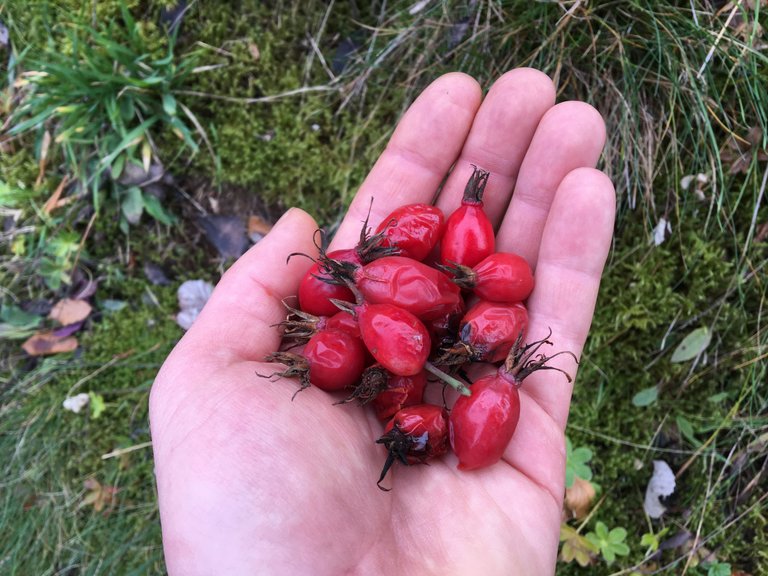
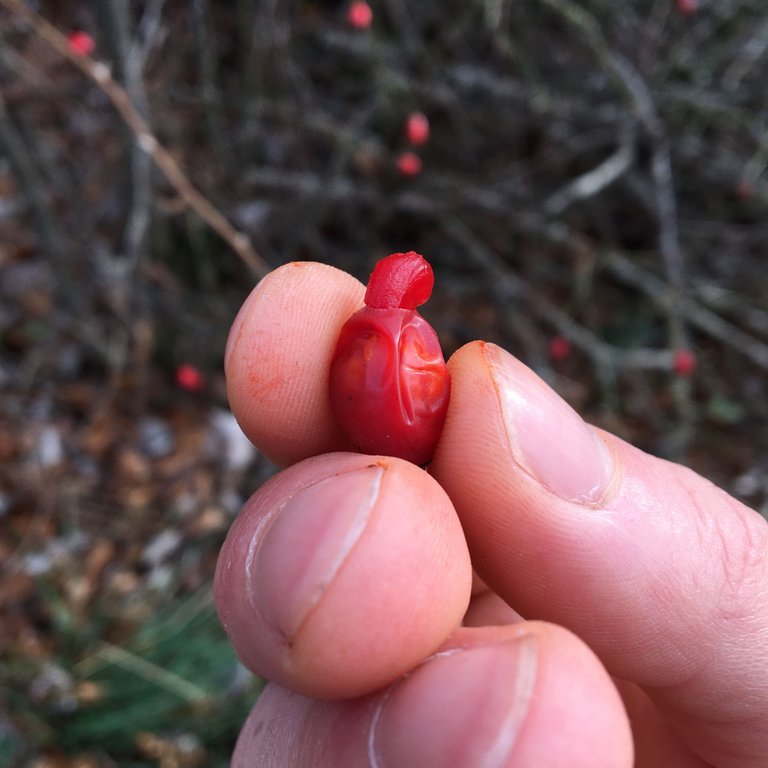
Loved this! I mean, the little plants growing in containers are cute but I loved the foraging updates. I had to google Umbilicus rupestris - of course, it's pennywort! I didn't realise you could pickle the leaves like gherkins! And I get SO excited when I find this many rosehips. And dear mallow - such a good one to go for when one has a sore throat or a cold. So soothing. I use the leaves too. Thanks @anttn !
How did I take so long to respond to your kind comment ? I didn't know you could use the leaves of gherkins, you just taught me something :) ! Gosh, rosehips are really my favorite of the cold season, so visually attractive... and tasty !
Thanks you too 💚
Nice pictures. I am curious where you got your knowledge about edible plants? :^)
Thanks you 😊
This mostly by curiosity, when I was a child, I was quite dangerous... Were trying everything, strange I’m still alive ^^
After, it’s mostly in books, started very modestly, but as you learn already 10/15 plants, you want more, of course..!
Have a nice weekend ahead, I hope you’re doing well ✌🏼😘
Hey! great to see someone else with a garden in their flat :) I live in concrete city, so that's all I can have for now.
Yeah, that could be hard sometimes concerning the space and care, especially in winter with the inside heat... but it’s always rewarding hehe !
Courage for your one 🍀
✒️ Pour ces photos et ces présentation de plantes, nous vous offrons 💝50 points-fr 💝, un reblogue, un mini-upvote
🎁 Recevez en plus un bonus de 3 points-fr pour votre sélection et ce pourboire : !LUV !GIF nature
💰 Plus de Tokens de 2eme couches vous attendent dans les posts de sélections et de récompenses
Récompense Multi-engagements des Francophones
Via Tenor
(4/10) sent you LUV. wallet | market | tools | discord | community | <>< daily
wallet | market | tools | discord | community | <>< daily
HiveWiki
HiveBuzz.me NFT for Peace
merci 😊
bon week-end à vous !
Thank you for sharing this post on HIVE!
Your content got selected by our fellow curator rezoanulvibes & you just received a little thank you upvote from us for your great work! Your post will be featured in one of our recurring compilations which are aiming to offer you a stage to widen your audience within the DIY scene of Hive. Next time make sure to post / cross-post your creation within the DIYHub community on HIVE and you will receive a higher upvote ;) Stay creative & HIVE ON!
Please vote for our hive witness <3
Thanks you !!
Profites bien !
!PGM
!PIZZA
ItharaGaian
Curation Manuelle Principauté du Bastion (@hive-143869 Community)
BUY AND STAKE THE PGM TO SEND A LOT OF TOKENS!
The tokens that the command sends are: 0.1 PGM-0.1 LVL-0.1 THGAMING-0.05 DEC-15 SBT-1 STARBITS-[0.00000001 BTC (SWAP.BTC) only if you have 2500 PGM in stake or more ]
5000 PGM IN STAKE = 2x rewards!
Discord
Support the curation account @ pgm-curator with a delegation 10 HP - 50 HP - 100 HP - 500 HP - 1000 HP
Get potential votes from @ pgm-curator by paying in PGM, here is a guide
I'm a bot, if you want a hand ask @ zottone444
Merci !
Par avance, bon week-end à toi ✌🏼
I gifted $PIZZA slices here:
(3/5) @itharagaian tipped @anttn (x1)
Learn more at https://hive.pizza!
These potted garden plants are so beautiful and healthy. Thanks so much for sharing